Last updated: April 21, 2025
Article
The Plateau Postcard: Spring 2025
The Plateau Postcard is the official newsletter of the Southern Colorado Plateau Network (SCPN). We are one of 32 National Park Service Inventory and Monitoring Networks across the country established to collect, organize, analyze, and synthesize natural resource data and information about national parks, and provide the results in a variety of formats useful to natural resource managers. SCPN comprises 19 national park units located throughout the diverse landscapes of northern Arizona, northwestern New Mexico, the Diné Nation, southwestern Colorado, and southern Utah.
Most importantly, we are a community of individuals who collectively love the Colorado Plateau.
In this edition, we highlight the exciting and new scientific journal put out by Petrified Forest National Park, interview our newest partner about their efforts to track white-nose syndrome in regional bat populations, discuss special food diets while working in the field, and share our latest publications and 2025 field schedule. Every edition starts out with a postcard from us to you, dear reader, and this issue brings tidings from Petrified Forest National Park...

Welcome to the Plateau!
Remembering a beautiful week last spring. That time of year when a rough winter is finally in the rearview mirror and plants are revealing their first blooms. The Plateau is spectacular in all seasons, don’t get me wrong, but there is just something special about spring, and there was no better time to receive an incredibly special guest.Meg White, the NPS Inventory and Monitoring Division Lead, visited the Southern Colorado Plateau Network last spring, and we were so happy for not only the awesome company, but also to share our beautiful region with someone we know respects and loves it too.
Meg is no stranger to the Colorado Plateau, as she earned a PhD from and served as a Reserach Scientist/Faculty at Arizona State University for several years. Although she is familiar with SCPN parks and monuments, we tried to share these special places with her anew, from a NPS perspective. First up was Canyon de Chelly National Monument located in the heart of the Diné Nation where we monitor bird populations, groundwater, and water quality. Keith Lyons, the extremely knowledgeable and always hospitable Integrated Resource Program Manager, took us below the rim to the canyon floor to show some of the great riparian restoration work they are doing.

Meg White/NPS
Next, we visited Walnut Canyon National Monument, another culturally rich park in our area. We met up with the very skilled and hard-working Biologist Mark Szydlo, and he took us on a beautiful hike to do a daytime follow-up survey for one of the species they survey for, the threatened Mexican Spotted Owl. We were incredibly fortunate to see a juvenile and an adult, and many smiles were shared all around.
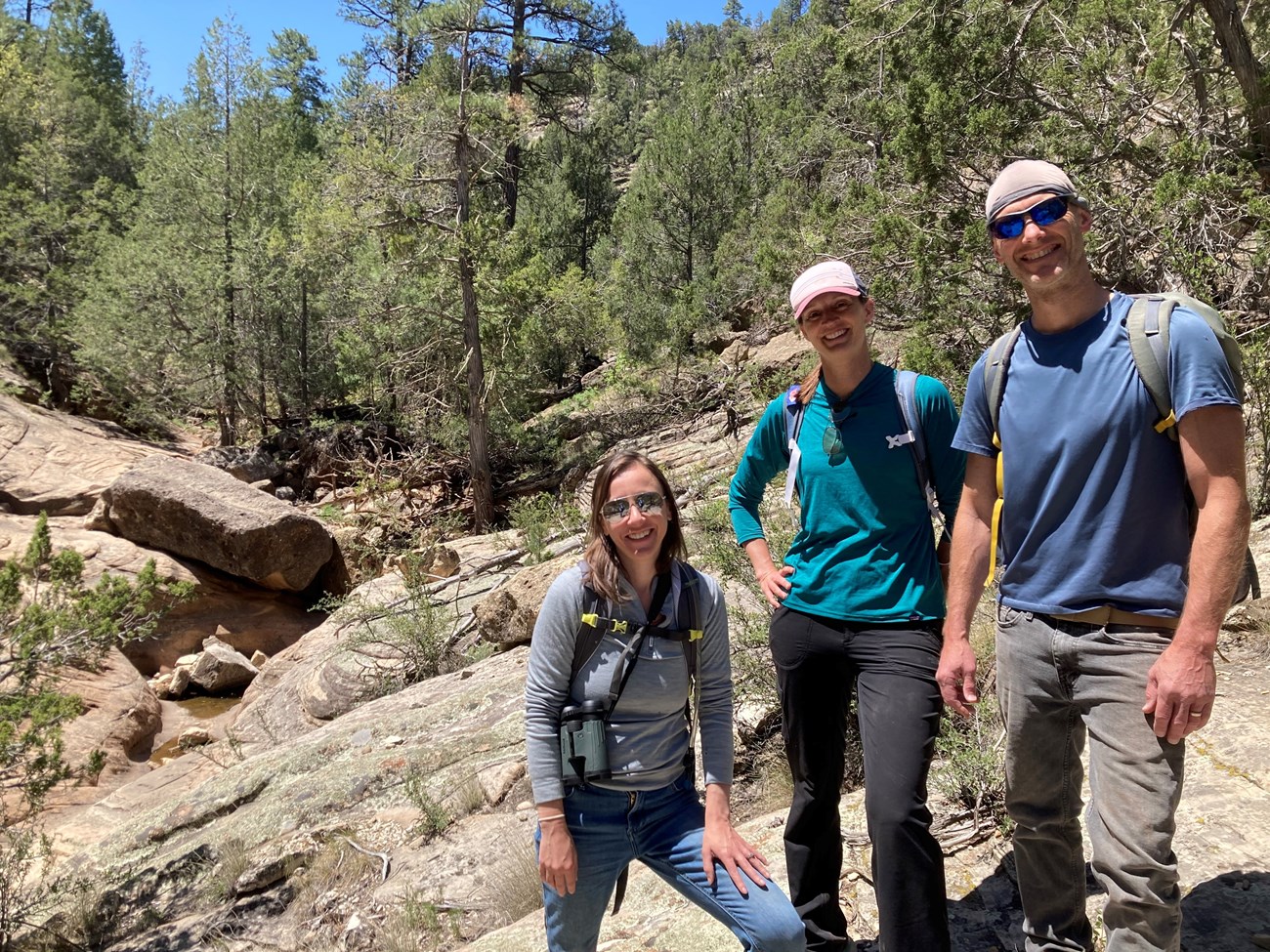
Matthew Johnson/NPS
Thank you, Meg, for the meaningful visit, and a chance to get to know you. We hope you come back real soon.
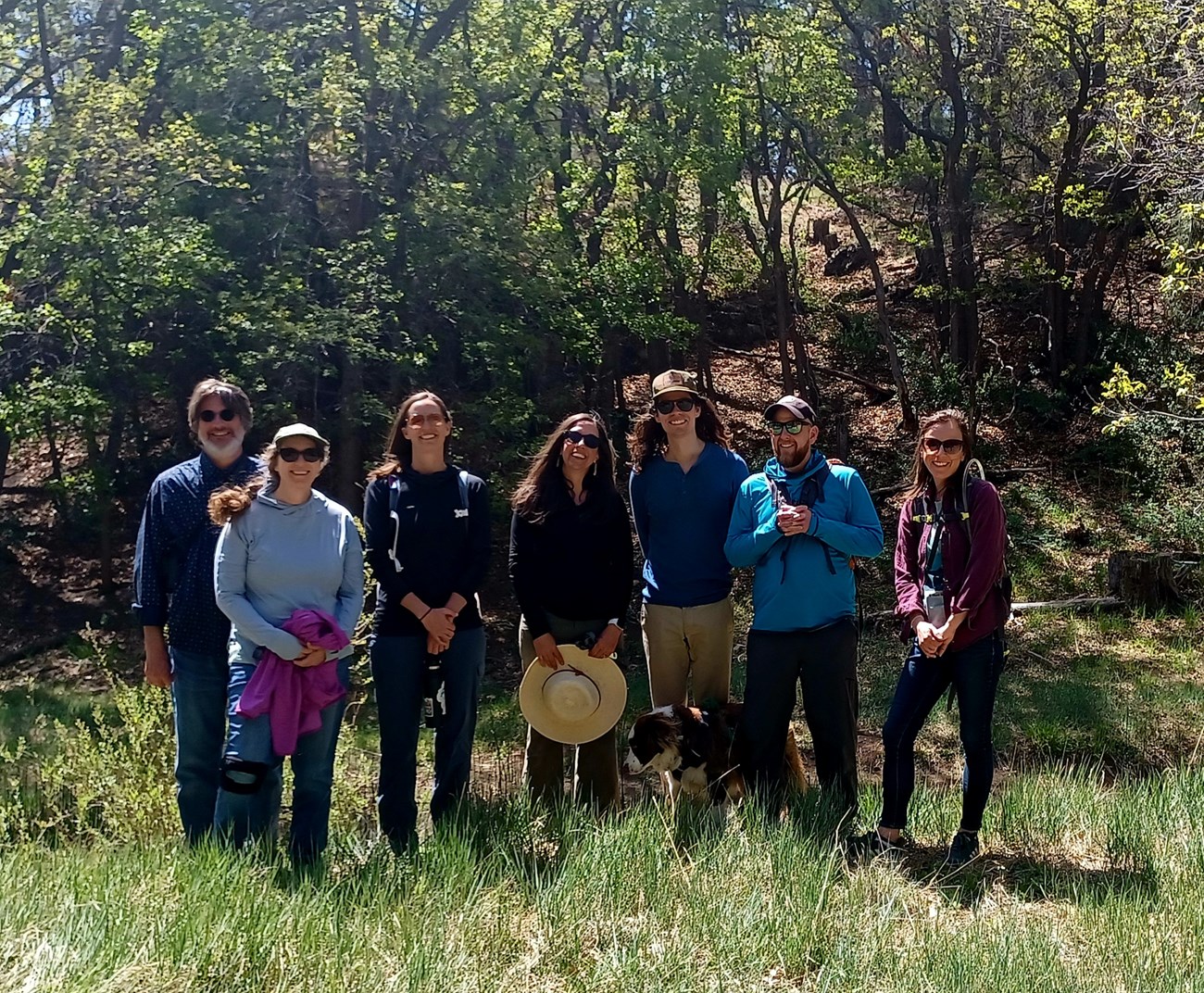
Christopher Calvo/NPS
The Lithodendron - A New, Regional Science Journal
Courtesy of the Amazing Scientists at Petrified Forest National Park
It is a rare and remarkable thing to have a science and history journal focused on a specific region, but thankfully that is exactly what several incredible scientists at Petrified Forest National Park (PEFO) and partners at the Petrified Forest Field Institute (PFFI) have brought to us all.
Lithodendron logo and cover image designed by Jon Hardes/NPS.
banks. A more perfect name for a journal for this region I cannot imagine. Lithodendron was a dream of Dr. William “Bill” Parker (Paleontologist and Integrated Resource Program Manager) and Matthew Brown (former fossil preparator at PEFO). It was brought to reality by the vision and dedication of Jonathan Hardes (Archaeology Lead), with support from Adam Marsh (Paleontology Lead), Bill, and PFFI. The region it focuses on is equally stunning in its beauty, richness of scientific research, and cultural history, consisting of much of the southern Colorado Plateau, including of course, the vast Petrified Forest and Painted
- Pueblo Period Archaeofauna of the Petrified Forest: A Baseline Synthesis (J. Hardes) Full Article. Petrified Forest National Park is widely known for its Late Triassic Period fossils. This first-time summary of the park’s Pueblo Period archaeofauna spans much of the currently known spectrum of human presence in North America, or more than 13,000 years.

Hallie Larsen/NPS
- Resilience of the Gladiator Milkvetch (J. Schively) Full Article. Hiding among eroding badlands, hoodoos, and ephemeral washes of Petrified Forest National Park is a rare endemic plant with a peculiar name, the Gladiator milkvetch (Astragalus xiphoides). How are populations doing today compared to a survey from 1989?
- Predation of Turkey Vultures by Golden Eagles in Walnut Canyon (J. Hardes and M. Szydlo) Full Article. Golden Eagles (Aquila chrysaetos) and their diets have been studied extensively in North America and beyond. Our study reveals a much higher proportion of Turkey Vulture (Cathartes aura) prey remains than is reported from any other Golden Eagle study in the country.
- The Allokotosaur Assemblage from a Multitaxic Bonebed at Petrified Forest (A. Marsh, C.A. Sidor, and E. A. Smith) Full Article. This discovery at this specific locality is important because it preserves teeth of Trilophosaurus phasmalophos in a maxilla that may help resolve taxonomic uncertainty in that genus.
For questions, manuscript submittal, and preparation guidelines contact Editor, Jonathan Hardes at jonathan_hardes@nps.gov
The Yellow-billed Cuckoo: A Rare Discovery in a Rare Habitat
SCPN partners find a Threatened species on the Puerco River in Petrified Forest
You won’t likely hear a more distinct sound beneath the canopy of willow and cottonwood trees. An abrupt rapping, like someone loudly banging two rocks together seven or eight times. The unique sound comes from a beautiful, medium sized bird, with a white neck and breast, rusty colored back and top of head, and the striking bill it’s named after: the Yellow-billed Cuckoo.

Peter Pearsall/USFWS
This federally threated bird is a riparian obligate species, meaning it needs increasingly rare riparian habitat to survive.
On the southern Colorado Plateau where there are large expanses of high elevation deserts, what riparian habitat exists is typically dominated by invasive tamarisk trees (primarily Tamarix ramosissima), and genrally not suitable for the Yellow-billed Cuckoo’s needs. But every once and again, a gem in the rough exists, like in Petrified Forest National Park where the green ribbon of the Puerco River winds its way through sandstone and the remnants of ancient fossilized trees. Here the habitat is mixed. Native trees like Fremont cottonwood (Populus fremontii) and Coyote Willow (Salix exigua) still grow alongside the non-natives, creating a multi-tiered habitat preferred by the cuckoo.
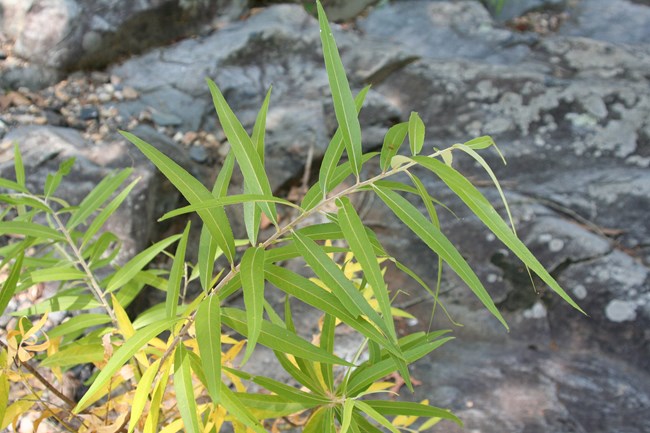
Justin Hobert/NPS
Though preferred ecosystems might exist, rare as they are, it is even rarer to actually have a Yellow-billed Cuckoo occupying it, let alone two of them. There has been only one record of a Yellow-billed Cuckoo in this area, but even then, the details and date of the detection are unclear. So, when a plan was put into place at the park to restore native trees along the banks of the Puerco River, it was important to determine if the Yellow-billed Cuckoo was present before disturbing the existing habitat. Through the Southern Colorado Plateau Network’s partnership with The Institute for Bird Populations, we were able to get the park the answers they were looking for.
The crew, led by Steven Albert, detected two Yellow-billed Cuckoo’s during two separate trips to the Puerco River. In addition to the cuckoo, 41 other bird species were detected along the river. This bird biodiversity, and the presence of a threatened riparian obligate species shows how special the Puerco River in Petrified Forest National Park truly is.
Further Reading: Full Report or Publication Brief (Web Article or Printable Version)
Notes from the Field: Celiac in the Back Country
Eating Specialized while Camping and Backpacking - By Jane Bailey
When discussing fieldwork, the question of food and water is critical, and often the most important when contemplating the feasibility of a particular lengthy survey period, often called a hitch. Planning food for a hitch sometimes becomes an interesting exercise when you have a specialized diet, including veganism, vegetarianism, or (in my case) having celiac disease and eating gluten-free.
For the 2024 field season, I was working for the Institute for Bird Populations and the Southern Colorado Plateau Network as an Avian Point Count Technician. I was part of a small team that conducts point counts for birds in several southwestern national
parks and monuments. The data collected informs scientists and park managers of population densities and movements of species.
A morning in the field is typically busy and always early. Breakfasts are planned to be something quick, full of enough carbohydrates and protein to keep going during a hard hike, and that can be thrown into a backpack without a fuss. After the alarm goes off
at 4:20 a.m., it’s moving hard till around noon. Field paperwork is finalized after we return to camp and surveys are completed. Camp chores, like restocking water and moving camp, if necessary, take place in the late afternoon. Cooking reasonably low effort meals
on a two-burner propane camp stove is saved for the evening. As we rise with the birds at first light, we are often asleep at dusk to prepare for the next day. Meal planning can get rather interesting (or complicated, depending on your persuasion) if you have a specialized diet. I have celiac disease, in addition to being dairy free. My body does not digest gluten, and I would be sick for several days if it were consumed, colloquially called a “glutening” or “being glutened”.

Jane Bailey
Eating gluten free, and by extension wheat free, sounds easy enough (which certainly is in that you follow one rule: no wheat!) but in practice can induce the occasional creative headache.
Being celiac means knowing the components of your food, the base ingredients inside and out to avoid any accidental glutening. Checking for sneaky inclusions like wheat as a binding agent (such as in granola bars) or soy sauce (which uses wheat as a source of sugar) is a must. Beef jerky? Check for soy sauce as a marinade. Teriyaki? No go. Tortilla chips, a total yes. So many great options are out there, but always read the ingredients list carefully.
Many of my field mates, also with specialized diets, watch out for gelatin in marshmallows and are prudent in finding a source of plant protein that works with their lifestyle. Canned fish and packaged chicken go out the window in favor of lentils, beans, chickpeas and greens, hitting center stage.
Each adherence carries its own set of safe and go-to meals. Cooking meals can range from highly energy intensive meal preps for an upcoming hitch on off-days (the hardcore technicians and backpacking aficionados will make their own dehydrated meals, reconstituted in camp with boiling water) or keeping meal prep as simple as keeping stocked on a rotating list of packaged favorites. Protein bars, fresh fruits, fresh vegetables, and bagged snacks like crackers and chips, are regular go-rounds in my camp kitchen.
It’s quite an engaging project to create a cohesive menu of variety, shelf-stability, packability, and nutrition. One technician’s source of reliable protein (meat sticks, maybe peanut butter) could be the last thing desired on someone else’s list. Each practice carries its own creative burdens.
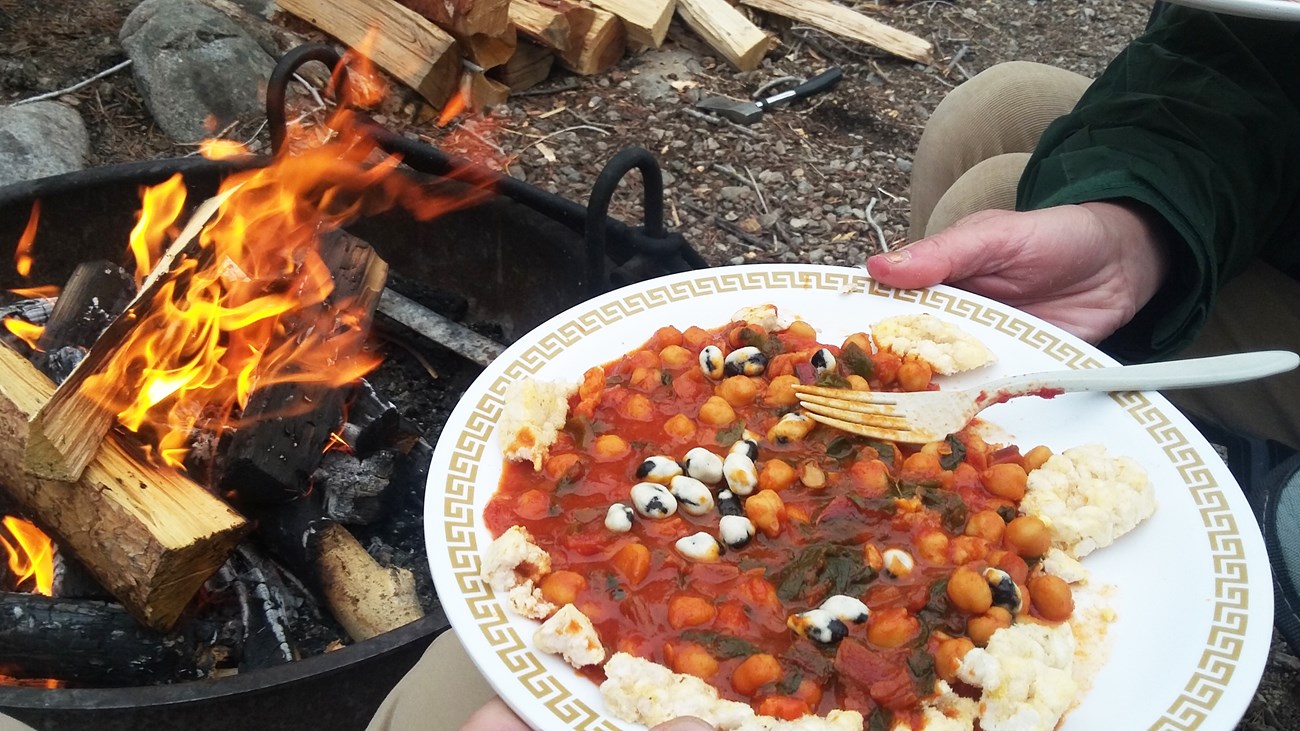
Ashley Doyle
Partner Profile: Maggie Johnston, Natural Resource Specialist
We’re proud to introduce one of our newest partners on the Colorado Plateau, Maggie Johnston. Maggie will be heading up the field portion of the collaborative and massive bat project we’ve all helped put together. It involves surveying for bats and testing for white-nose syndrome at 20 parks and monuments in the Southern and Northern Colorado Plateau Networks. Let’s get to know one of the amazing ecologists behind it all.
Where did you grow up and where are you currently living?
I grew up in the Shenandoah Valley of Virginia. When I was born, my parents and older sister were living on Massanutten Mountain at the time, but we moved when I was still really small into Rockingham County, and ROCO was all I knew until I went to college. I went to Virginia Tech in 2018, graduated and started working with the Conservation Management Institute of Virginia Tech in 2022 and called Blacksburg and Christiansburg home until 2023 when I temporarily moved out to Arizona to start the field work for our work on the Colorado Plateau. I became a North Carolina resident with my now fiancé in 2024, and I do field work and work remotely for CMI/Virginia Tech now, while living in a small area called Belews Creek outside of Winston Salem, North Carolina.
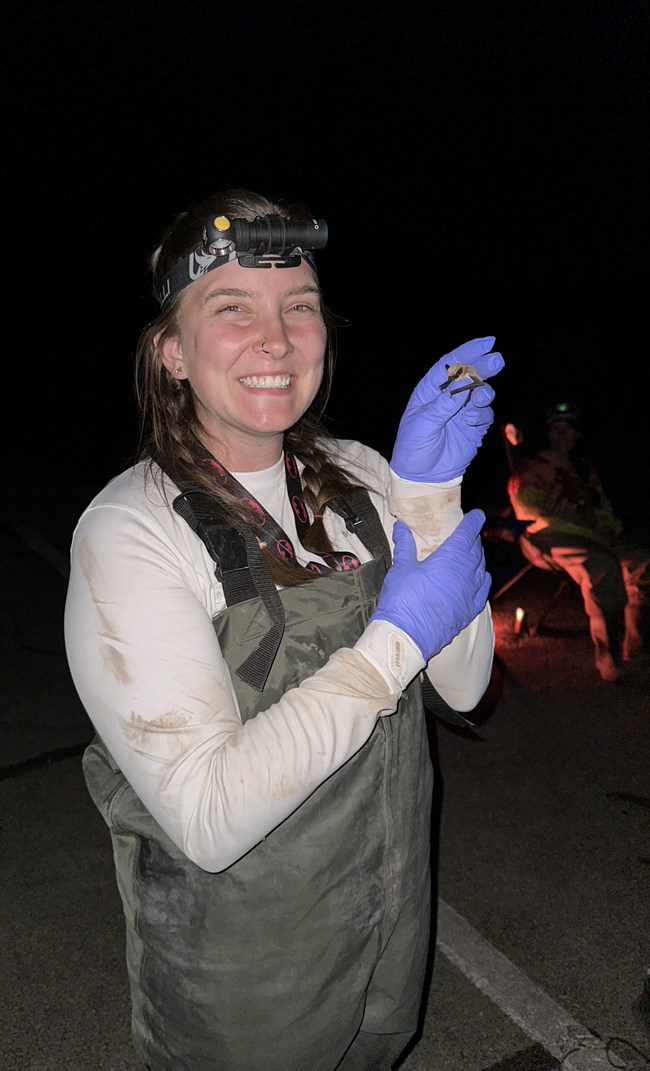
Cordie Diggins
My dad was passionate about wildlife and the outdoors and shared that passion for me, and that translated into me wanting to pursue higher education and a career in the field once I discovered it was possible while in high school. Honestly, once I found out Virginia Tech had a program for wildlife conservation, I was ready to jump in headfirst. Additionally, there is a class all wildlife conservation majors must take, and it is there that I connected with my now boss, whom I have learned so much from and I would not be where I am today in this field without him! I am incredibly thankful for the mentor he has been and every opportunity he has given me, especially allowing me to be part of this project.
Honestly, he is the sole person who got me into bats. I have always admired bats. I remember when one got into our house when I was young and my mom freaked out and then another time when there was one chilling from our carport ceiling, but that’s it. Mike St Germain is the Batman who made me into Batgirl! I am so grateful that life has led me on this path to contribute to science and conservation and I am excited to see what is for me further down the road.
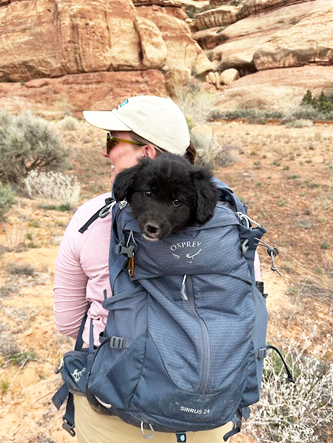
What’s an interesting fact about you?
During our spring 2024 hitch, my field crew and I found two puppies in the middle of the road outside of Hovenweep National Monument! One of the puppies went with a family back to Oregon who was also at the Hovenweep campground, and the other one came all the way back home to North Carolina with me! Her name is Woodie; she is named after Woody’s Tavern in Moab. She was only about 6-8 weeks old when we picked her up and is almost a year old now. We found her right at the end of our hitch, so we only had about a day or two of field work left before we had to hit the road back east and she did wonderfully the whole time. I’m so glad we found her!
What is the project you will be working on with us and what do you hope to accomplish with it?
I am working on the Colorado Plateau White-nose syndrome monitoring project to monitor the effects of white-nose syndrome on bats within your region. We are monitoring these bat species in two ways: through capture and through acoustic monitoring. The capture is done overnight, using mist nets that we set up and monitor at night while the bats are active, and as we catch the bats in the nets, we remove them from the nets, take measurements from the bats and swab them for the fungus that causes white-nose syndrome, Pseudogymnoascus destructans, or Pd. On the acoustic monitoring side of things, we have acoustic recording units set up to record bat calls year-round (12 months, continuously) that we check a couple times a year. During our checks, we swap out SD cards and make sure all parts of the acoustic recording units (ARU’s) are working properly (including the detectors, solar panels, microphones, batteries, and charge controllers). The data the ARU’s collect is put through computer software that tells us what species were in the area at a specific time and date. This information will start to help us understand activity levels of bats as white-nose syndrome makes its way into the Colorado Plateau and surrounding areas.
Do you have a favorite bat species?
On the east coast, you can’t go wrong with the Eastern red bat! But in the desert, I couldn’t get enough of the little guys, especially the fringed myotis who has some super cute fringe hairs along its uropatagium. I also got lucky with two spotted bat captures, and those are some amazing critters!
Are there any particular parks that you are excited to work in?
I visited Mesa Verde National Park in the fall of 2023 and thought it was so beautiful, so getting back there for work is exciting. I am excited to explore the parks we get to work in around the Flagstaff area too, such as Walnut Canyon National Monument, Sunset Crater National Monument, and Wupatki National Monument.
Truly look forward to working with you Maggie, and hopefully Woodie too at the dog friendly parks! (Interview conducted by Christopher Calvo)
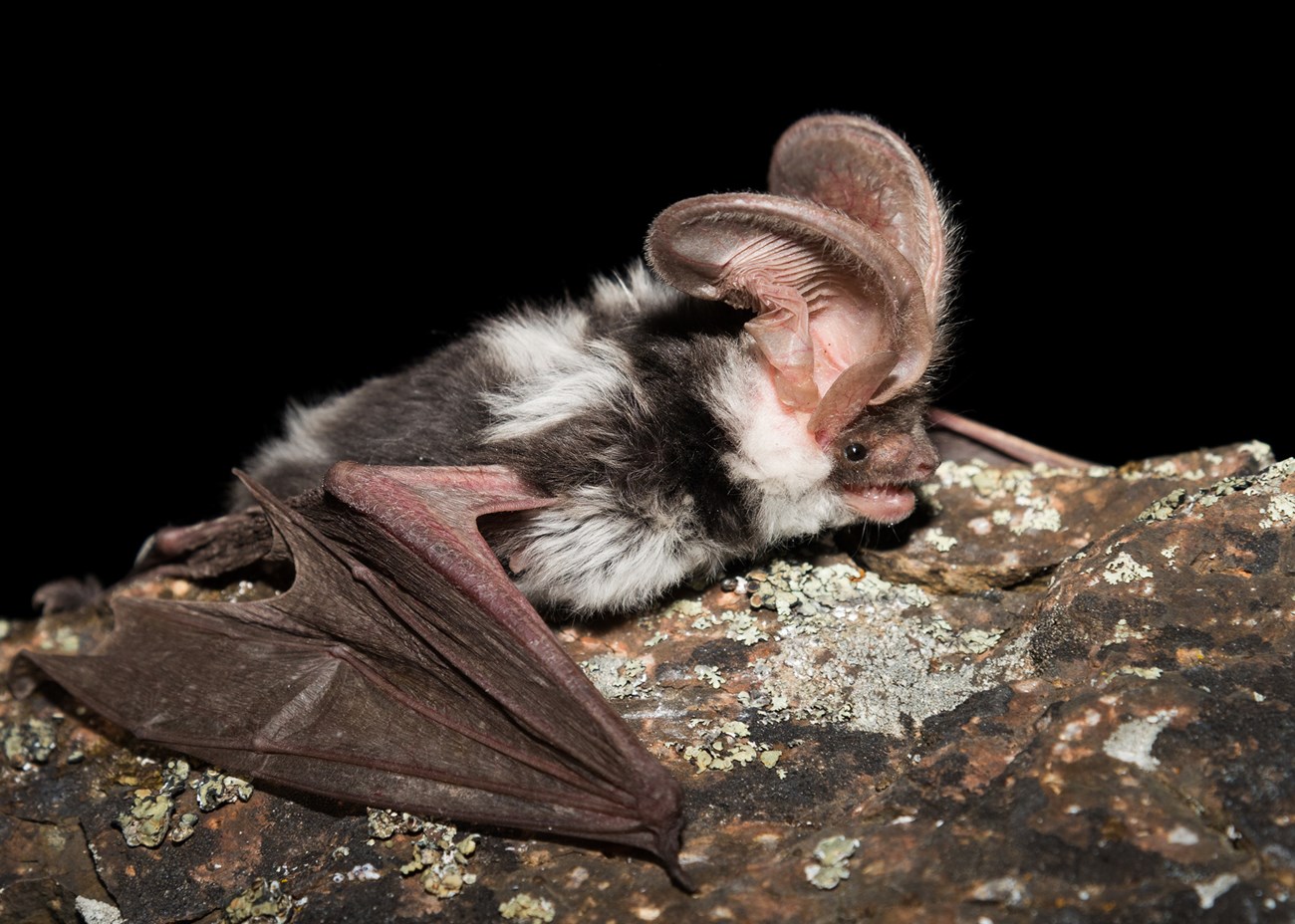
Ian Routley (CC BY-NC)
Recent Publications
SCPN authors in bold.Albert S., H. Jones, W. DeMott, and D. Schneider. 2024. Yellow-billed cuckoo surveys at Petrified Forest National Park: Final report for the 2023 field season. Science Report. NPS/SR—2024/153. National Park Service. Fort Collins, Colorado. Full Report. Web Article. Printable Brief.
Herring, G., L.B. Tennant, J.J. Willacker, M. Johnson, R.B. Siegel, J.S. Polasik, and C.A. Eagles-Smith. 2024. Wildfire burn severity and stream chemistry influence aquatic invertebrate and riparian avian mercury exposure in forested ecosystems. Ecotoxicology 33:131–141. Full Report.
Jones, H.H., C. Ray, M. Johnson, and R. Siegel. 2024. Breeding birds of high elevation mixed-conifer forests have declined in national parks of the southwestern U.S. while lower-elevation species have increased, with responses to drought varying by habitat. Ornithological Applications Volume 126:1–16. Full Report. Web Article. Printable Brief.
Jones, H., C. Walter, E. Cox, L. Schofield, and M. Johnson. 2024. Breeding bird inventory of Petroglyph National Monument, with special emphasis on species associated with rocky escarpment habitat. Natural Resource Report NPS/SCPN/NRR—2024/2624. National Park Service, Fort Collins, Colorado. Full Report. Web Article. Printable Brief.
Noel, A.R., D.R. Schlaepfer, B.J. Butterfield, M.C. Swan, J. Norris, K. Hartwig, M.C. Duniway, and J.B. Bradford. 2025. Most pinyon-juniper woodland species distributions are projected to shrink rather than shift under climate change. Rangeland Ecology and Management 98:454-466. Full Report.
Stumpf, S.E., and L.W. Ploughe. 2024. Long-term trend in the aquatic macroinvertebrate community of the Mancos River at Mesa Verde National Park: Aquatic macroinvertebrate monitoring 2008–2019. Science Report NPS/SR—2024/209. National Park Service, Fort Collins, Colorado. Full Report. Web Article. Printable Brief.
Thomas, L.P. 2024. Semi-arid plant communities of the Southern Colorado Plateau in relation to regional climate context and local topoedaphic conditions: Comparing species abundance patterns across a network of sites to identify climate-driven vulnerabilities and inform hypotheses about future composition shifts. Science Report NPS/SR—2024/217. National Park Service, Fort Collins, Colorado. Full Report.
2025 SCPN Field Schedule
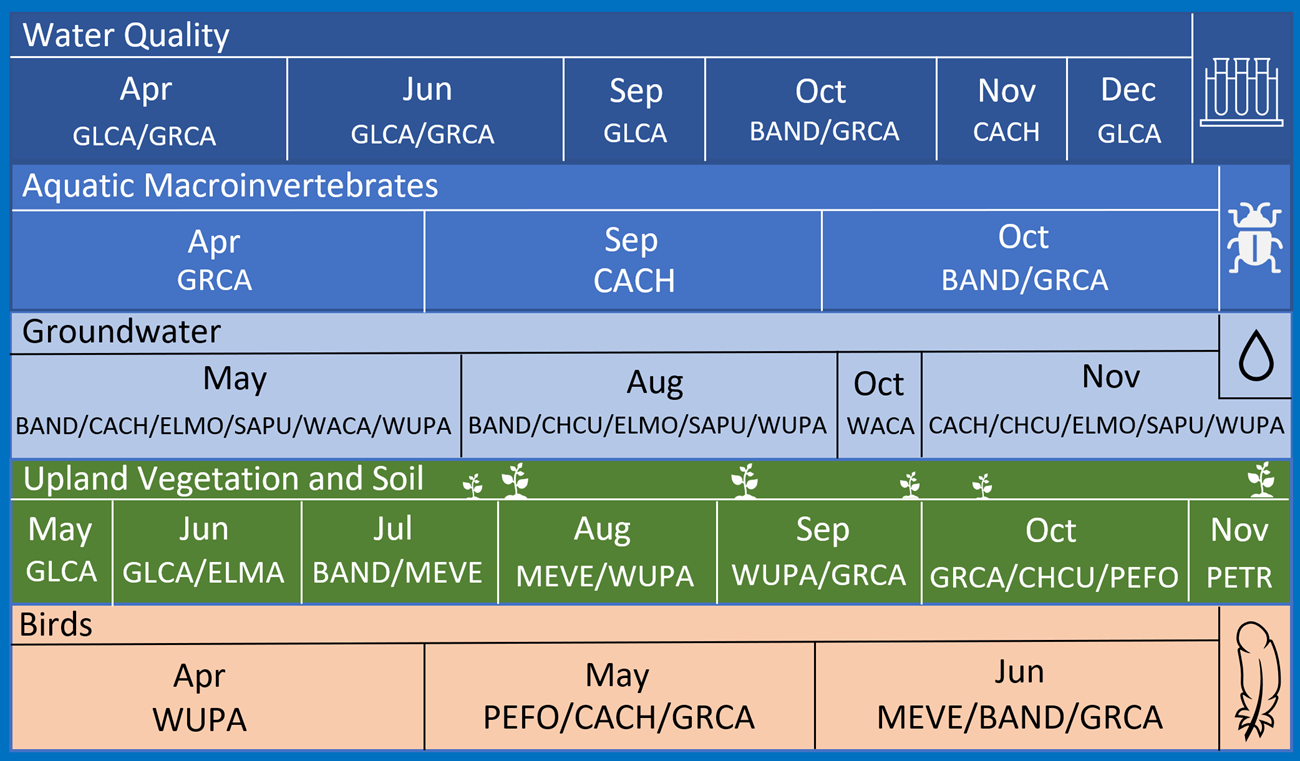
Printable version of newsletter
Newsletter designed and written by Christopher Calvo (unless noted).
Tags
- aztec ruins national monument
- bandelier national monument
- canyon de chelly national monument
- chaco culture national historical park
- el malpais national monument
- el morro national monument
- glen canyon national recreation area
- grand canyon national park
- hubbell trading post national historic site
- mesa verde national park
- navajo national monument
- petrified forest national park
- petroglyph national monument
- rainbow bridge national monument
- salinas pueblo missions national monument
- sunset crater volcano national monument
- walnut canyon national monument
- wupatki national monument
- yucca house national monument
- southern colorado plateau network
- newsletter
- scpn
- bats
- white-nose syndrome
- aztec ruins national monument
- bandelier national monument
- canyon de chelly national monument
- chaco culture national historical park
- el malpais national monument
- el morro national monument
- glen canyon national recreation area
- grand canyon national park
- hubbell trading post national historic site
- mesa verde national park
- navajo national monument
- petrified forest national park
- petrified forest field institute
- petroglyph national monument
- rainbow bridge national monument
- salinas pueblo missions national monument
- sunset crater volcano national monument
- walnut canyon national monument
- wupatki national monument
- yucca house national monument
- university of virginia
- yellow-billed cuckoo
- threatened species
- riparian ecosystems
